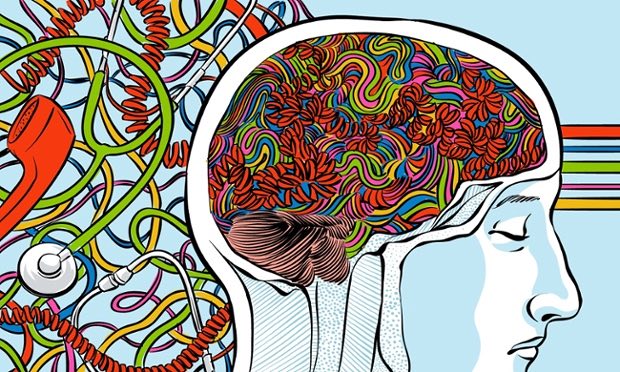Throughout the entire 40 years of practice my patients continually hear me say “drain the liver/ clear the gallbladder” This piece from New Human not only speaks to one of the best products for this BUT adds excellent educational material on both these organs. I really want you to understand the importance of these two organs.
 Ultra GL is guaranteed to be the most potent Gallbladder/Liver conditioner and detoxifier available in the world. Ultra GL is especially useful for conditions where the liver gets stressed due to the toxicity of certain chemicals. Ultra GL also assists in normal functioning liver cells in that it has antioxidant properties that support liver cell integrity as well as assists in preserving existing liver strength when dealing with many overwhelming challenges. We must keep in mind; the liver is the largest internal organ and it is important the liver is functioning on a normal level when it is responsible for performing more than 500 different functions. Various nutrients are required in order for the liver detoxification to be carried out successfully. An adequate supply of key antioxidants is essential to prevent further liver damage. Milk thistle, vitamin C, selenium, beta carotene, vitamin E, and N-acetyl-cysteine (NAC) are all powerful antioxidants which are helpful in liver detoxification. Amino acids such as, SAM-E, Arginine HCL, and many others play an important role in liver health. The B vitamins, including riboflavin and niacin, also aid in liver detoxification. Ultra GL contains these and much more in its “Multi-Dimensional” form guaranteeing it to be the most potent formula available on the market today!
Ultra GL is guaranteed to be the most potent Gallbladder/Liver conditioner and detoxifier available in the world. Ultra GL is especially useful for conditions where the liver gets stressed due to the toxicity of certain chemicals. Ultra GL also assists in normal functioning liver cells in that it has antioxidant properties that support liver cell integrity as well as assists in preserving existing liver strength when dealing with many overwhelming challenges. We must keep in mind; the liver is the largest internal organ and it is important the liver is functioning on a normal level when it is responsible for performing more than 500 different functions. Various nutrients are required in order for the liver detoxification to be carried out successfully. An adequate supply of key antioxidants is essential to prevent further liver damage. Milk thistle, vitamin C, selenium, beta carotene, vitamin E, and N-acetyl-cysteine (NAC) are all powerful antioxidants which are helpful in liver detoxification. Amino acids such as, SAM-E, Arginine HCL, and many others play an important role in liver health. The B vitamins, including riboflavin and niacin, also aid in liver detoxification. Ultra GL contains these and much more in its “Multi-Dimensional” form guaranteeing it to be the most potent formula available on the market today!
Benefits:
- Glucose Regulation
- Immune System Health
- Enzyme Production And Storage (Improved Digestion)
- Glycogen Production And Storage
- Improved Filtration (For Nutrients and Your Blood)
- Increased Energy Levels
Symptoms:
- Nausea
- Malaise
- Vomiting
- Fatigue
- Loss of Appetite
- Itching
- Yellow Coloring Of The Skin Or Eyes
- Pain In The Top Right Of The Stomach
- Dark Urine
Importance of The Gallbladder
Another important part of our body is the gallbladder. We have to recognize that the gallbladder detox system is closely related to our liver. It is a small pear-shaped sac that is on the lower side of the liver. Its main function is storing and concentrating bile. So what does bile do? It is made by the liver and used in the small intestine. It helps to emulsify fats, lubricate the intestines, and made our stool a brownish color. Water and minerals are absorbed from the bile and so it becomes darker in color. The preferable color of bile is walnut brown and therefore, stool should not be too light in color which indicates the lack of bile in our body. Toxins are eliminated by the liver and passed through the bile. Then it is concentrated within the gallbladder where the toxins entrapped in the bile are later excreted from the body through the stool. Therefore, the gallbladder’s importance is very much correlated with the function of the liver in its cleansing of toxins. However, the gallbladder detox system can be congested if we do not maintain proper diet or keep it healthy. Firstly, we have to know that the gallbladder has always been an easy target for the development of gallstones. With this in mind we have formulated Ultra GL to detoxify both the liver and the Gallbladder on “Multi-Dimensional” levels for maximized healing on every level possible.
JUST WHAT DOES THE LIVER DO?
The liver is considered by most naturopathic doctors to be the definitive organ in the human body that, based on its health and overall functioning, determines how healthy a person FEELS. This connection between the health of the liver and a person’s general feeling of well-being is why so many naturopathic doctors usually begin a diagnosis of a patient with liver testing. Located just under the rib cage on the right side of the abdomen, the liver is the largest and one of the most important organs in the human body. It performs hundreds of tasks in every minute of everyday, more than any other organ, including the brain. It is constantly filtering, detoxifying, synthesizing, and processing a wide variety of physiological substances. Without a healthy, well-functioning liver, it is easy to become overly-toxic, which can lead to chronic fatigue, a general feeling of sickness and often times depression. The liver is so vital of an organ that a human being cannot survive more than 24 hours without its proper functioning. The liver is involved in all of the most critical systems in the body, including the nervous, immune, endocrine, digestive and circulatory systems and any weakness or debility in the liver impacts every other organ system. In addition to its endless detoxification work, the liver is also the main organ that produces energy to our bodies. It does so by regulating carbohydrate and protein metabolism, hormonal activity, fat burning, and blood sugar. Because of the liver’s role in your body’s metabolism, flushing it out periodically, not only helps you feel much healthier but it also makes it easier for you to maintain an optimal weight.
NOTE: :Recommendations are 1 teaspoon 1-2 x daily allowing one 8 ounce bottle to last anywhere from 24-48 days. My professional opinion–, this is a life saving product worth looking into.
There are two additional Gallbladder posts on this website

















 Lemon cultivars can be sweet, sour, and downright pucker-inducing. In the kitchen, they can be used in savory dishes and sweet treats, as well as employed as antibacterial cleaning agents. They’re good for digestion, too. That’s a lot of work packed into these little yellow fruits!
Lemon cultivars can be sweet, sour, and downright pucker-inducing. In the kitchen, they can be used in savory dishes and sweet treats, as well as employed as antibacterial cleaning agents. They’re good for digestion, too. That’s a lot of work packed into these little yellow fruits! Morocco, Russia and the United States.
Morocco, Russia and the United States.